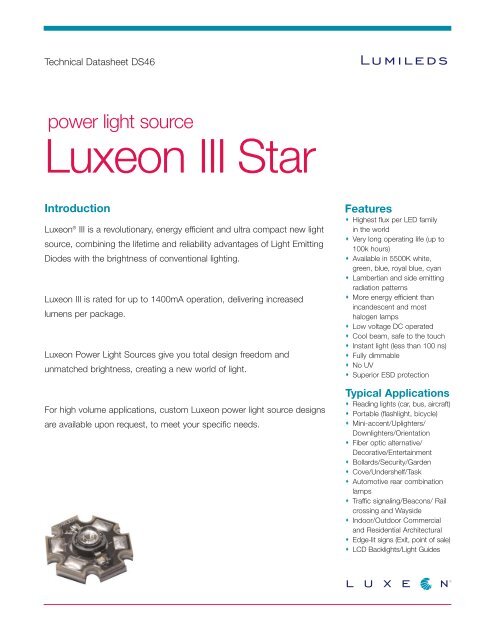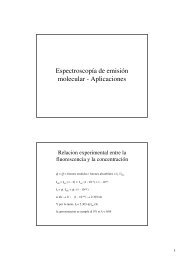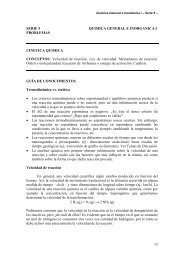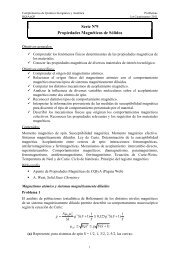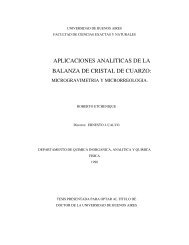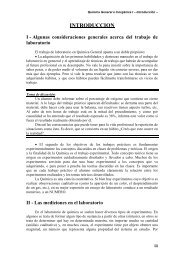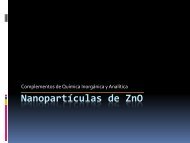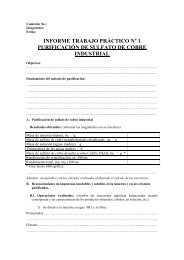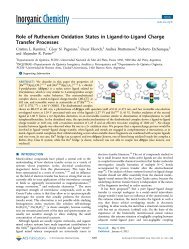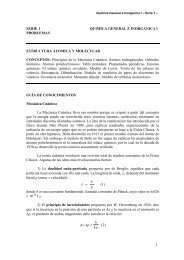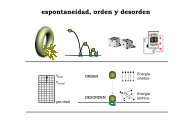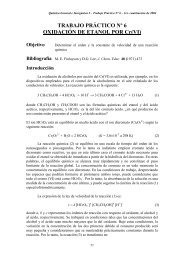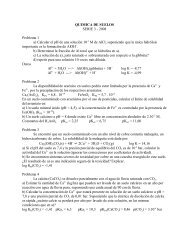Luxeon III Star Technical Datasheet
Luxeon III Star Technical Datasheet
Luxeon III Star Technical Datasheet
You also want an ePaper? Increase the reach of your titles
YUMPU automatically turns print PDFs into web optimized ePapers that Google loves.
Flux Characteristics at 1000mA, Junction Temperature, T J = 25ºCTable 2.Typical Luminous Flux (lm) orRadiometric Power (mW)<strong>Luxeon</strong> Φ V[1,2]RadiationColor Emitter 1000 mA PatternWhite LXHL-LW3C 80Green LXHL-LM3C 80 LambertianCyan LXHL-LE3C 80Blue [3] LXHL-LB3C 30Royal Blue [4] LXHL-LR3C 450 mWWhite LXHL-FW3C 70Green LXHL-FM3C 70 Side EmittingBlue [3] LXHL-FB3C 27Notes for Tables 1 & 2:1.Minimum luminous flux or radiometric power performance guaranteed within published operating conditions. Lumileds maintainsa tolerance of ± 10% on flux and power measurements.2.<strong>Luxeon</strong> types with even higher luminous flux levels will become available in the future. Please consult your Lumileds AuthorizedDistributor or Lumileds sales representative for more information.3.Typical flux value for 470 nm devices. Due to the CIE eye response curve in the short blue wavelength range, the minimumluminous flux will vary over the Lumileds blue color range. Luminous flux will vary from a typical of 17 lm for the 460-465nmbin to a typical of 30 lm for the 475-480 nm bin due to this effect. Although the luminous power efficiency is lower in the shortblue wavelength range, radiometric power efficiency increases as wavelength decreases. For more information, consult the<strong>Luxeon</strong> Design Guide, available upon request.4.Royal Blue product is binned by radiometric power and peak wavelength rather than photometric lumens and dominantwavelength.Flux Characteristics at 1400mA, Junction Temperature, T J = 25ºCTable 3.MinimumTypicalLuminous Luminous<strong>Luxeon</strong> Flux (lm) Flux (lm) RadiationColor Emitter[1,2]Φ V[2]Φ V PatternRed LXHL-LD3C 90 140Red-Orange LXHL-LH3C 120 190 LambertianAmber LXHL-LL3C 70 110Red LXHL-FD3C 90 125Red-Orange LXHL-FH3C 120 170 Side EmittingAmber LXHL-FL3C 70 100Notes for Table 3:1.Minimum luminous flux performance guaranteed within published operating conditions. Lumileds maintains a tolerance of± 10% on flux measurements.2.<strong>Luxeon</strong> types with even higher luminous flux levels will become available in the future. Please consult your Lumileds AuthorizedDistributor or Lumileds sales representative for more information.<strong>Luxeon</strong> <strong>III</strong> <strong>Star</strong> DS46 (3/05)3
Optical Characteristics at 700mA, Junction Temperature, T J = 25ºCTable 4.Dominant Wavelength [1]TemperatureλD, Coefficient of TotalPeak Wavelength [2] λP, Spectral Dominant Included Viewingor Color Temperature [3] Half-width [4] Wavelength Angle [5] Angle [6]Radiation CCT (nm) (nm/ o C) (degrees) (degrees)Pattern Color Min. Typ. Max. ∆λ 1/2 ∆λ D / ∆T J θ 0.90V 2θ 1/2White 4500K 5500K 10000K — —Green 520nm 530nm 550nm 35 0.04 160 140Lambertian Cyan 490nm 505nm 520nm 30 0.04 160 140Blue 460nm 470nm 490nm 25 0.04 160 140Royal Blue [2] 440nm 455nm 460nm 20 0.04 160 140Optical Characteristics at 700mA, Junction Temperature, T J = 25ºCContinuedTable 5.Temperature TypicalDominant Wavelength [1] Coefficient of Total Flux TypicalλD, Spectral Dominant Percent Angleor Color Temperature [3] Half-width [4] Wavelength within of PeakRadiation CCT (nm) (nm/ o C) first 45° [7] Intensity [8]Pattern Color Min. Typ. Max. Cum Φ 45° ∆λ D / ∆T J Cum Φ 45° θ PeakWhite 4500K 5500K 10000K — —
Electrical Characteristics at 700mA, Junction Temperature, T J = 25ºCTable 8.TemperatureCoefficient of ThermalForward Resistance,[1]Forward Voltage V F Dynamic Voltage [3] Junction(V) Resistance [2] (mV/ o C) to BoardColor Min. Typ. Max. (Ω) R D ∆V F / ∆T J ( o C/W) Rθ J-BWhite 3.03 3.70 4.47 0.8 -2.0 17Green 3.03 3.70 4.47 0.8 -2.0 17Cyan 3.03 3.70 4.47 0.8 -2.0 17Blue 3.03 3.70 4.47 0.8 -2.0 17Royal Blue 3.03 3.70 4.47 0.8 -2.0 17Notes for Table 8:1.Lumileds maintains a tolerance of ± 0.06V on forward voltage measurements.2.Dynamic resistance is the inverse of the slope in linear forward voltage model for LEDs. See Figures 3a and 3b.3.Measured between 25 o C ≤ T J ≤ 110 o C at I F = 700mA.Electrical Characteristics at 1000mA, Junction Temperature, TJ = 25ºCColorTable 9.Typical Forward VoltageV F (V) [1]1000 mAWhite 3.90Green 3.90Cyan 3.90Blue 3.90Royal Blue 3.90Notes for Table 9:1.Proper current derating must be observed to maintain junction temperature below the maximum. For moreinformation, consult the <strong>Luxeon</strong> Design Guide, available upon request.2.Allowable board temperature to avoid exceeding maximum junction temperature at maximum Vf limit at 700 mA based onthermal resistance of <strong>Star</strong> assembly.3.LEDs are not designed to be driven in reverse bias. Please consult Lumileds' Application Brief AB11 for further information.<strong>Luxeon</strong> <strong>III</strong> <strong>Star</strong> DS46 (3/05) 6
Electrical Characteristics at 1400mA,Junction Temperature, T J = 25ºCTable 10.TemperatureCoefficient of ThermalForward Resistance,Dynamic Voltage [3] JunctionForward Voltage V F (V) [1] Resistance [2] (mV/ o C) to BoardColor Min. Typ. Max. (Ω) R D ∆V F / ∆T J ( o C/W) Rθ J-BRed 2.31 2.95 3.51 0.7 -2.0 10Red-Orange 2.31 2.95 3.51 0.7 -2.0 10Amber 2.31 2.95 3.51 0.7 -2.0 10Notes for Table 10:1.Lumileds maintains a tolerance of ± 0.06V on forward voltage measurements.2.Dynamic resistance is the inverse of the slope in linear forward voltage model for LEDs. See Figure 3.3.Measured between 25ºC ≤ T J ≤ 110ºC at I F = 1400mA.Absolute Maximum RatingsTable 11.White/Green/Red/Cyan/Blue/Red-Orange/Parameter Royal Blue AmberDC Forward Current (mA) [1] 1000 1540Peak Pulsed Forward Current (mA) 1000 2200Average Forward Current (mA) 1000 1400LED Junction Temperature (ºC) 135 135Storage Operating Temperature (ºC) -40 to +120 -40 to +120ESD Sensitivity [2] ±16,000V HBM ±16,000V HBMNotes for Table 11:1.Proper current derating must be observed to maintain junction temperature below the maximum. For moreinformation, consult the <strong>Luxeon</strong> Design Guide, available upon request.2.LEDs are not designed to be driven in reverse bias. Please consult Lumileds’ Application Brief AB11 forfurther information.<strong>Luxeon</strong> <strong>III</strong> <strong>Star</strong> DS46 (3/05) 7
Wavelength Characteristics, T J = 25ºCFigure 1a. Relative Intensity vs. Wavelength1.0Relative Specrtal PowerDistribution0.80.60.40.20.0350 400 450 500 550 600 650 700 750 800Wavelength (nm)Figure 1b. White Color Spectrum of Typical 5500K CCT Part, Integrated Measurement.<strong>Luxeon</strong> <strong>III</strong> <strong>Star</strong> DS46 (3/05) 8
Light Output CharacteristicsRelative Light Output (%)1501401301201101009080706050Green Pho to metricCyan PhotometricBlue PhotometricWhite PhotometricRoyal Blue Radiometric-20 0 20 40 60 80 100 120Junction Temperature, T J( o C)Figure 2. Relative Light Output vs. Junction Temperaturefor White, Green, Cyan, Blue and Royal Blue.Relative Light Output (%2001801601401201008060Red40Red-Orange20Amber0-20 0 20 40 60 80 100 120Junction Temperature, T J( o C)Figure 3. Relative Light Output vs. Junction Temperatureor Red, Red-Orange and Amber.<strong>Luxeon</strong> <strong>III</strong> <strong>Star</strong> DS46 (3/05) 9
Forward Current Characteristics, T J = 25ºCNote:Driving these high power devices at currents less than the test conditions may produce unpredictable results and may be subjectto variation in performance. Pulse width modulation (PWM) is recommended for dimming effects.1100Average Forward Current (mA)100090080070060050040030020010000 1 2 3 4 5Vf - Forward Voltage (Volts)Figure 4. Forward Current vs. Forward Voltage for White,Green, Cyan, Blue, and Royal Blue.Average Forward Current (mA220020001800160014001200100080060040020001.00 1.25 1.50 1.75 2.00 2.25 2.50 2.75 3.00 3.25 3.50 3.75 4.00Vf - Forward Voltage (Volts)Figure 5. Forward Current vs. Forward Voltage for Red,Red-Orange and Amber.<strong>Luxeon</strong> <strong>III</strong> <strong>Star</strong> DS46 (3/05) 10
Forward Current Characteristics, T J = 25ºC, ContinuedNote:Driving these high power devices at currents less than the test conditions may produce unpredictable results and may be subjectto variation in performance. Pulse width modulation (PWM) is recommended for dimming effects.1.4Normalized Luminous Flux1.21.00.80.60.40.20.00 200 400 600 800 1000I f - Forward Current (mA)Figure 6. Relative Luminous Flux vs. Forward Current for White,Green, Cyan, Blue, and Royal Blue at T J = 25ºC maintained.1.6Normalized Relative Luminous Flux1.41.21.00.80.60.40.20.00 200 400 600 800 1000 1200 1400 1600 1800 2000 2200If - Forward Current (mA)Figure 7. Relative Luminous Flux vs. Forward Current for Red,Red-Orange and Amber at T J = 25ºC maintained.<strong>Luxeon</strong> <strong>III</strong> <strong>Star</strong> DS46 (3/05) 11
Current Derating CurvesFigure 8. Maximum Forward Current vs. Ambient Temperature.Derating based on T JMAX = 135ºC for White, Green, Cyan, Blue, and Royal Blue. Since <strong>Luxeon</strong> <strong>III</strong> may be driven at up to1000mA, derating curves may not be applicable for all operating conditions.I F- Forward Current (mA)16001400120010008006004002000Rθ J-A=25 o C/WRθ J-A=20 o C/WRθ J-A=15 o C/W0 25 50 75 100 125 150T A- Ambient Temperature ( ο C)Figure 9. Maximum Forward Current vs. Ambient Temperature.Derating based on T JMAX = 135°C for Red, Red-Orange, and Amber.<strong>Luxeon</strong> <strong>III</strong> <strong>Star</strong> DS46 (3/05) 12
Typical Lambertian Representative Spatial Radiation PatternNote:For more detailed technical information regarding <strong>Luxeon</strong> radiation patterns, please consult your Lumileds Authorized Distributoror Lumileds sales representative.Relative Intensity (%)1009080706050403020100Typical Upper BoundTypical Lower Bound-100 -80 -60 -40 -20 0 20 40 60 80 100Angular Displacment (Degrees)Figure 10. Typical Representative Spatial Radiation Patternfor <strong>Luxeon</strong> Emitter White, Green, Cyan, Blue and Royal Blue.100%90%Relative Intensity80%70%60%50%40%30%20%10%0%-100 -80 -60 -40 -20 0 20 40 60 80 100Angular Displacement (Degrees)Figure 11. Typical Representative Spatial Radiation Patternfor <strong>Luxeon</strong> Lambertian Emitter Red, Red-Orange and Amber.<strong>Luxeon</strong> <strong>III</strong> <strong>Star</strong> DS46 (3/05) 13
Typical Side Emitting Representative Spatial Radiation Pattern100Side Emitting Radiation Pattern90Relative Intensity (%)80706050403020100-120 -100 -80 -60 -40 -20 0 20 40 60 80 100 120Angular Displacement (Degrees)Figure 12. Typical Representative Spatial Radiation Patternfor <strong>Luxeon</strong> Emitter White, Green and Blue..Relative Intensity100%90%80%70%60%50%40%30%20%10%0%-120 -100 -80 -60 -40 -20 0 20 40 60 80 100 120Angular Displacement (Degrees)Figure 13. Typical Representative Spatial Radiation Patternfor <strong>Luxeon</strong> Side Emitting Emitter Red, Red-Orange and Amber.Average Lumen Maintenance CharacteristicsLifetime for solid-state lighting devices (LEDs) is typically defined in terms of lumen maintenance-the percentage ofinitial light output remaining after a specified period of time. Lumileds projects that white, green, cyan, blue, and royal blue<strong>Luxeon</strong> <strong>III</strong> products will deliver, on average, 70% lumen maintenance at 50,000 hours of operation at a 700 mA forward currentor 50% lumen maintenance at 20,000 hours of operation at a 1000 mA forward current. Lumileds projects that red, red-orange,and amber <strong>Luxeon</strong> <strong>III</strong> products will deliver, on average 50% lumen maintenance at 20,000 hours of operation at a 1400 mAforward current. This performance is based on independent test data, Lumileds historical data from tests run on similar materialsystems, and internal <strong>Luxeon</strong> reliability testing. This projection is based on constant current operation with junction temperaturemaintained at or below 90°C. Observation of design limits included in this data sheet is required in order to achieve thisprojected lumen maintenance.<strong>Luxeon</strong> <strong>III</strong> <strong>Star</strong> DS46 (3/05) 14
Company Information<strong>Luxeon</strong> is developed, manufactured and marketed by LumiledsLighting, U.S., LLC. Lumileds is a world-class supplier of LightEmitting Diodes (LEDs) producing billions of LEDs annually. Lumiledsis a fully integrated supplier, producing core LED material in all threebase colors (Red, Green, Blue) and White. Lumileds has R&D developmentcenters in San Jose, California and Best, The Netherlandsand production capabilities in San Jose, California and Malaysia.Lumileds Lighting is a joint venture of Agilent Technologies and PhilipsLighting and was founded in 1999. Lumileds is pioneering the highfluxLED technology and bridging the gap between solid-state LEDtechnology and the lighting world. Lumileds is absolutely dedicated tobringing the best and brightest LED technology to enable new applicationsand markets in the Lighting world.Lumileds may make process or materialschanges affecting the performance orother characteristics of our products.These products supplied after suchchanges will continue to meet publishedspecifications, but may not be identicalto products supplied as samples orunder prior orders.www.luxeon.comwww.lumiledsfuture.comFor technical assistance or thelocation of your nearest salesoffice contact any of thefollowing:North America:+1 888 589 3662 oraskluxeon@futureelectronics.comEurope:00 800 443 88 873 orluxeon.europe@futureelectronics.com©2005 Lumileds Lighting U.S., LLC. All rights reserved. Lumileds Lighting is a joint venture between AgilentTechnologies and Philips Lighting. <strong>Luxeon</strong> is a registered trademark of Lumileds Lighting. Product specificationsare subject to change without notice.Asia:800 5864 5337 orlumileds.asia@futureelectronics.com


